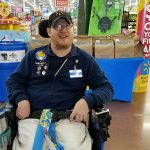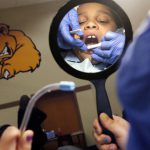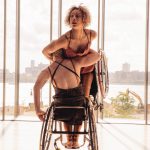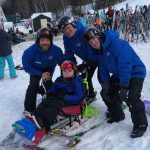Walmart, which last week announced its intention to change the job responsibilities of the front-door greeter position often occupied by employees with disabilities, has committed to retaining those employees. The fierce community backlash against Walmart’s initial decision, which would have caused some greeters to lose their jobs, led the company to offer alternate positions to the displaced employees, such as supervising self-checkout.
The American Dental Association recently changed its ethics rules to prohibit refusing service to patients on the basis of physical, developmental or intellectual disability. The new rule requires dentists who lack the equipment or expertise to offer effective treatment to refer patients to practitioners who can provide treatment. These rules govern membership in the American Dental Association and can serve as the basis for state laws.
In a first-person essay, dancer and choreographer Alice Sheppard describes her feelings and thoughts as queer woman of color who uses a wheelchair during a performance of her most recent show, DESCENT. Sheppard encourages those who view art created by individuals with disabilities to understand it as nuanced and not solely a political statement. She also rejects a “deficit-based understanding of [her] body.”
A biotech investor suggests that executives in health care technology companies spend time working with adaptive athletics to discover the real-life impact of their companies’ efforts. The author, who is involved with New England Disabled Sports, spotlights the organization’s Coach for a Day initiative, which enables biotech employees to “shadow” adaptive sports specialists as they work with athletes with disabilities. He says the experience helps employees find purpose in their work.
An article in the scholarly journal Autism finds that almost 20 percent of children with autism are referred to a child abuse hotline by age 8. The study used data on 25,000 Tennessee children with autism gathered through the U.S. Centers for Disease Control and Prevention’s autism surveillance program.





